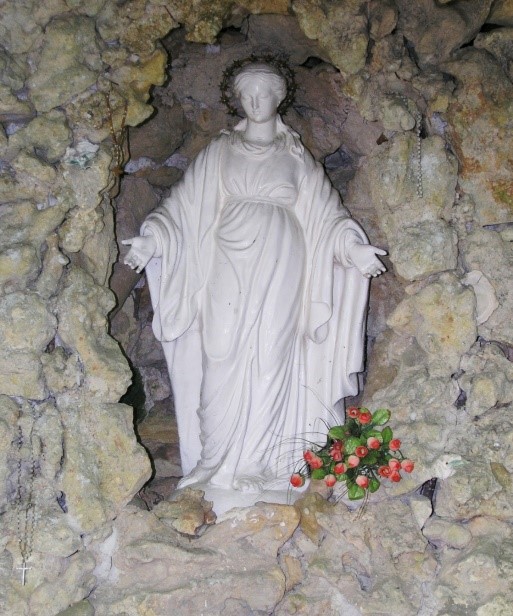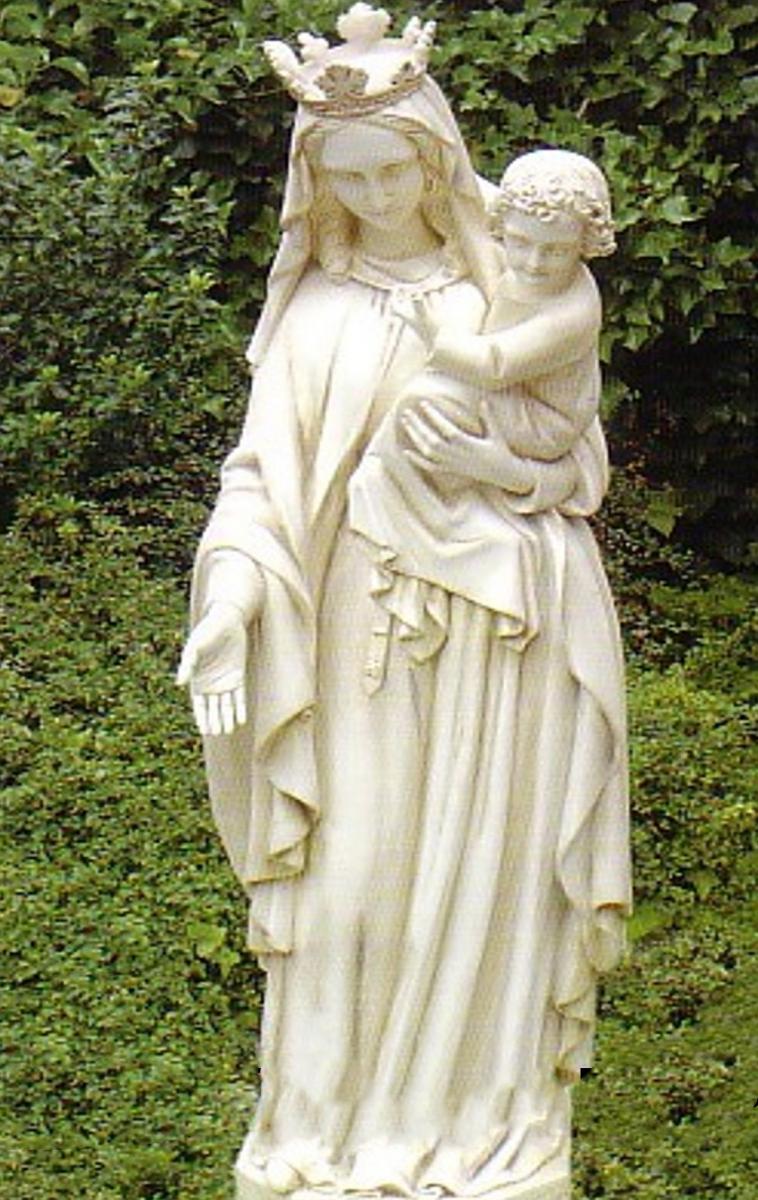Our Lady of All Graces
12th June
|
Mother Bonnat tells us that although Our Good Father addressed Our Lady under various titles, he summed them all up in the title “Our Lady of All Graces.” He got to know Our Lady under this title in the seminary of Saint-Sulpice at Issy where there is a small chapel in the grounds dedicated to Our Lady of All Graces. This would have been the first statue of Our Lady of All Graces that he knew. Our Lady is seated presenting Jesus to us. He is standing on her knee.
|
The Good Father recommends us to do the same as he did, to sum up all Our Lady’s titles in this one. He says, for example, It is very good and very advantageous to invoke Mary our blessed Mother under her different titles but it is a duty for the members of the Holy Family by what they do and what they say, to propagate trust in Mary under the name of Our Lady of All Graces. Our Founder did not go into any complicated theological explanations about what he meant by the title of Our Lady of All Graces. For him, she was simply a wonderful Mother to whom he went when he needed something, and she got it for him. He encourages us to ask for her help before God in all the circumstances of our lives and, especially in all the good works that we undertake for the glory of God in Jesus, Mary and Joseph. He actually used the gospel of the Feast’s Mass—the Wedding Feast of Cana—to illustrate the way Mary asks Jesus for what we need, and gets it. One of the things he said in that homily is that the power of Mary at the wedding feast is the image of the power, which she has today in heaven. He said he often asked Our Lady to renew the miracle that she obtained from her Son at Cana; that as he turned the water into wine, may he turn our wayward hearts into hearts burning with love for him and for her.
Áine Hayde Britain & Ireland |
|


 Our Founder wrote his Rules for the various Holy Family groups in front of the statue of Our Lady of All Graces in the grotto on the island in Martillac stopping frequently to pray to her for guidance. Then when he was too ill to go to the island, he had a replica of that statue made for his room so that he could continue his work in her presence, so to speak. You may say that the statue in the grotto is not Our Lady of All Graces. But it is. Our Lady was always Our Lady of All Graces for Fr. Noailles no matter what the statue looked like.
Our Founder wrote his Rules for the various Holy Family groups in front of the statue of Our Lady of All Graces in the grotto on the island in Martillac stopping frequently to pray to her for guidance. Then when he was too ill to go to the island, he had a replica of that statue made for his room so that he could continue his work in her presence, so to speak. You may say that the statue in the grotto is not Our Lady of All Graces. But it is. Our Lady was always Our Lady of All Graces for Fr. Noailles no matter what the statue looked like. 